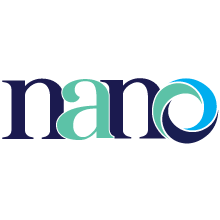At Nano, we cherish the sacred bond between patients, caregivers, and medical interventions. We’re here to offer more than sophisticated procedures – we’re here to infuse new hope into lives, rekindle vitality, and shape promising tomorrows.
Peripheral Artery Disease (PAD)
Also known as peripheral vascular disease, occurs when fatty deposits and other substances accumulate in the blood vessels that supply blood to various parts of the body. This can lead to slowed blood flow and blockages, increasing the risk of heart attack and stroke.
Symptoms include leg pain, cramps during physical activity, slow-to-heal wounds, temperature differences in limbs, and other signs like poor nail and hair growth, or erectile dysfunction in diabetic men.
Risk factors include age, family history, cardiovascular disease, smoking, diabetes, obesity, high cholesterol, high blood pressure, and physical inactivity.
Diagnosis involves medical history, physical exams, and tests like ankle brachial index, exercise tests, ultrasounds, MRAs, CTAs, and angiograms.

Heart Attack
Occurs when plaque buildup narrows an artery in the heart, restricting blood flow and causing the heart muscle to start dying due to insufficient oxygen supply.
Symptoms include gradual or sudden chest pain, discomfort in arms, back, neck, jaw, or stomach, shortness of breath, sweating, and nausea.
Risk factors include smoking, high blood pressure, cholesterol levels, alcohol intake, diabetes, and obesity.
Diagnosis involves blood tests, electrocardiography, and coronary angiography.
Coronary Artery Disease
Results from plaque buildup in artery walls, causing narrowed arteries and reduced oxygen supply to the heart.
Symptoms develop gradually, experienced during stress or rest, and can include upper body pain, shortness of breath, fatigue, irregular heartbeat, sweating, and nausea.
Risk factors are divided into non-modifiable (age, gender, race, family history) and modifiable (smoking, high blood pressure, cholesterol, alcohol intake, diabetes, obesity, inactivity, stress, unhealthy diet).
Diagnosis involves blood tests, electrocardiogram, echocardiogram, stress test, heart CT scan, cardiac catheterization, and angiogram


SV ASD Sinous Venus ASD
- Sinus Venosus Atrial Septal Defect (SV ASD) is a specific type of ASD.
- Unlike the more common ASDs, SV ASD occurs near the top of the atrial septum where the superior vena cava (a large vein) enters the right atrium.
- This hole allows oxygen-rich blood from the left atrium to mix with oxygen-poor blood from the right atrium.
- SV ASD involves an abnormal opening between the right atrium and the venous connection.
- This condition can cause similar symptoms as other ASDs, such as fatigue, shortness of breath, and heart palpitations.
- Diagnosis and treatment of SV ASD often follow similar principles to those of standard ASDs, with the goal of closing the defect to prevent complications and improve heart function.
- Interventional procedures or surgery may be necessary depending on the size and location of the SV ASD.
ASD (Atrial Septal Defect)
- Atrial Septal Defect, commonly referred to as ASD, is a congenital heart condition.
- It involves a hole in the wall (septum) that separates the upper chambers (atria) of the heart.
- This hole allows oxygen-rich blood from the left atrium to mix with oxygen-poor blood from the right atrium.
- ASD is typically present from birth but may not always be diagnosed immediately.
- Small ASDs may not cause noticeable symptoms, but larger ones can lead to various health issues.
- Treatment options for ASD may include observation, medications, or in some cases, surgical or catheter-based interventions to close the hole.

Treatment We Offer
Proceduring Awareness
- Week Before Procedure: Confirmation call and instructions for arrival and medication.
- Day of Procedure: Admission and registration at Mount Sinai Hospital.
- Registration: Provide personal and insurance information, medication list, and copayment.
- Pre-Procedure: Some patients admitted overnight, while others come on the same day. IV line, bloodwork, chest x-ray, EKG, consent, and site preparation.
- Day of Your Procedure (Holding Area): Evaluation by nurse and anesthesiologist before moving to the procedure room.
- Procedure Room: Monitoring, shaving of access area, sterile draping, sedation/anesthesia infusion, procedure performed while asleep.
- Intensive Care Unit (ICU): Monitoring, physical exams, blood tests, chest x-ray, EKG, ultrasound for recovery assessment. Stay usually 24-48 hours.
- Monitoring in Hospital Room: Close monitoring until ready for discharge, usually 2-3 days.
Post-Procedure
After the procedure, you will be transferred to the ICU for 24-48 hours. Monitoring lines will be in place initially, and once removed, you will move to the step-down telemetry floor. Nurses will closely monitor your vital signs, wound sites, circulation, and conduct routine blood work. The TAVR Heart Team will visit you daily. A repeat echocardiogram will be performed within 24 hours to assess the new valve’s functionality. Most patients will be out of bed the day after the procedure and receive physical therapy to aid in their recovery. A social worker will assist in arranging home services or rehabilitation as needed.


